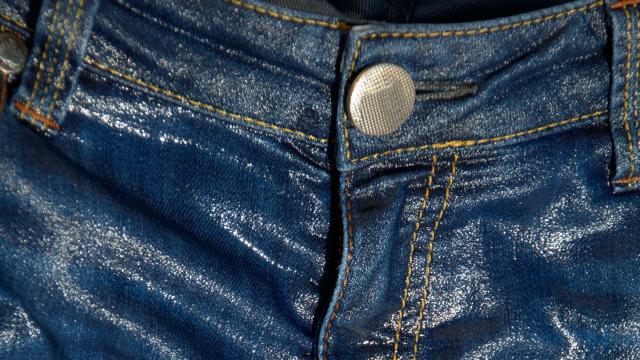Wearing damp jeans is no fun because they are uncomfortable. Wearing jeans that were formerly damp is no fun because they stink. Fabrics that have gotten especially mildewy — whether because you didn’t hang them to dry fast enough or they’ve been in the hamper too long — can even continue to reek after a wash. However, you can easily zap that nasty wet odor out of your shirts, pants, and towels so you can wear your clothes without smelling them, too.
Why your clothes became stinky in the first place
Clothes often get smelly because they were left in the washing machine too long, or when the dryer hasn’t done its job well enough. Or your clothes could be stinky and damp for any of these reasons:
- You sweated while you wore them and they dried before you washed them, locking in the nasty aroma.
- You hung the item to dry but it was too humid for them to dry before mildew formed.
- Your climate is humid and your clothes, towels, or other fabrics are stuck in a cycle of becoming vaguely damp and drying off on their own.
- Your closet is poorly ventilated and dark, allowing mildew to grow.
- You rewear clothes or reuse towels too often without washing them.
- Your clothes are made of synthetic fabrics that hold in smells.
- Your washing machine is old and has a musty stink baked in, depositing that smell on everything you clean.
If possible, identify what is causing your clothes to stink in the first place. Dehumidify your home, clean your washing machine periodically, and stick to a schedule when it comes to washing your gym or outdoor summer clothes. You don’t need to overhaul your whole lifestyle or stop wearing synthetic fabrics — the best way to combat a stinky sweatshirt is not to let it get stinky in the first place. But if that doesn’t work…
How to get the mildewy smell out of fabrics
You have a few options when it comes to getting the stench out of your clothes. The most widely-touted is the use of white vinegar. Per Kelly’s Dry Cleaners, you can easily swap out your fabric softener with white vinegar during your rinse cycle. Just add one cup per load for top-loading washers and 1/4- to 1/2-cup for front-load washers. For serious smells, try washing musty fabrics in hot water with a full cup of white vinegar and no detergent.
Try these approaches, too:
- Sprinkle 1/4- to 1/2-cup of baking soda in your washing machine before washing a load, then rinse with the aforementioned white vinegar.
- Pre-treat musty fabrics with borax by soaking them in a tub of hot water and 1/2-cup of borax for an hour before a normal wash cycle.
- Try washing with a specialised product, like Bio Laundry Booster or Thornell Ordorcide Laundry Odor Eliminator Concentrate.
When you line dry clothes, towels, or other previously-musty fabrics, try to place them in direct sunlight. This tip comes from Apartment Therapy, which notes that ultraviolet rays have their own disinfecting properties that can help kill mildew. Plus, this will help your garments smell fresh, especially compared to the burnt scent you can sometimes get from a dryer.
If outdoor drying isn’t an option, follow the drying instructions for the type of fabric you’re working with, and simply double check it’s fully dry before you put it away.

Leave a Reply
You must be logged in to post a comment.